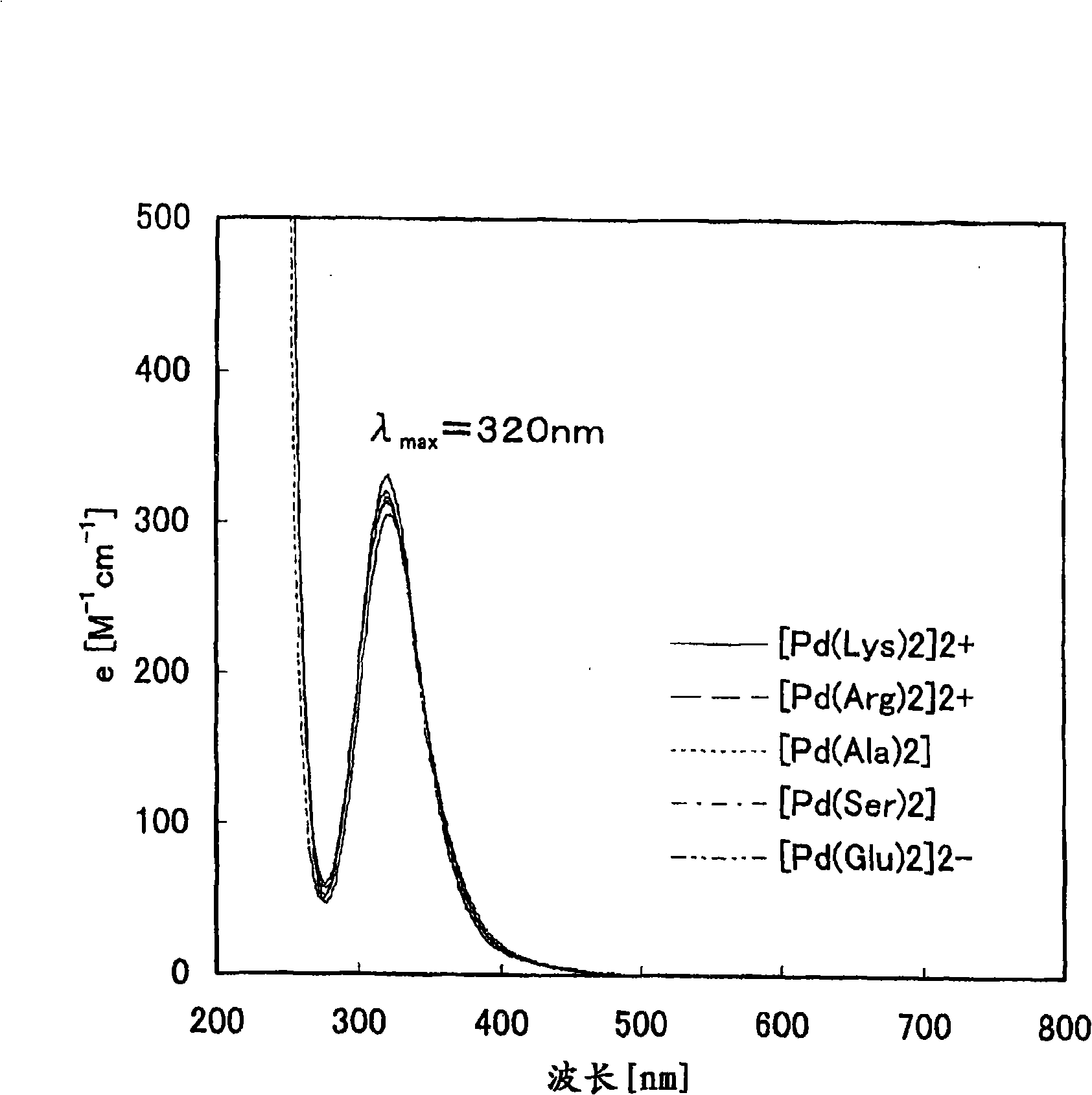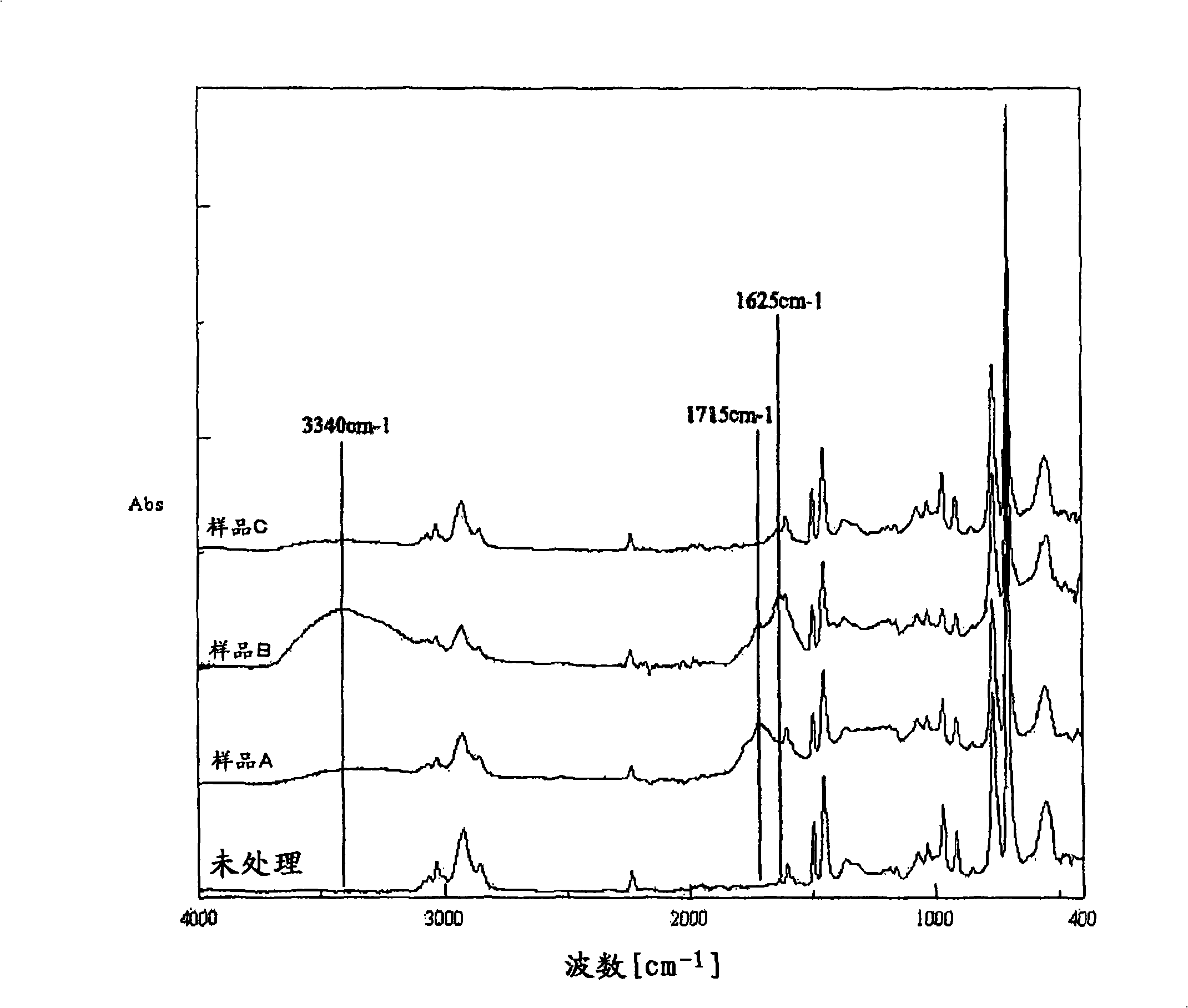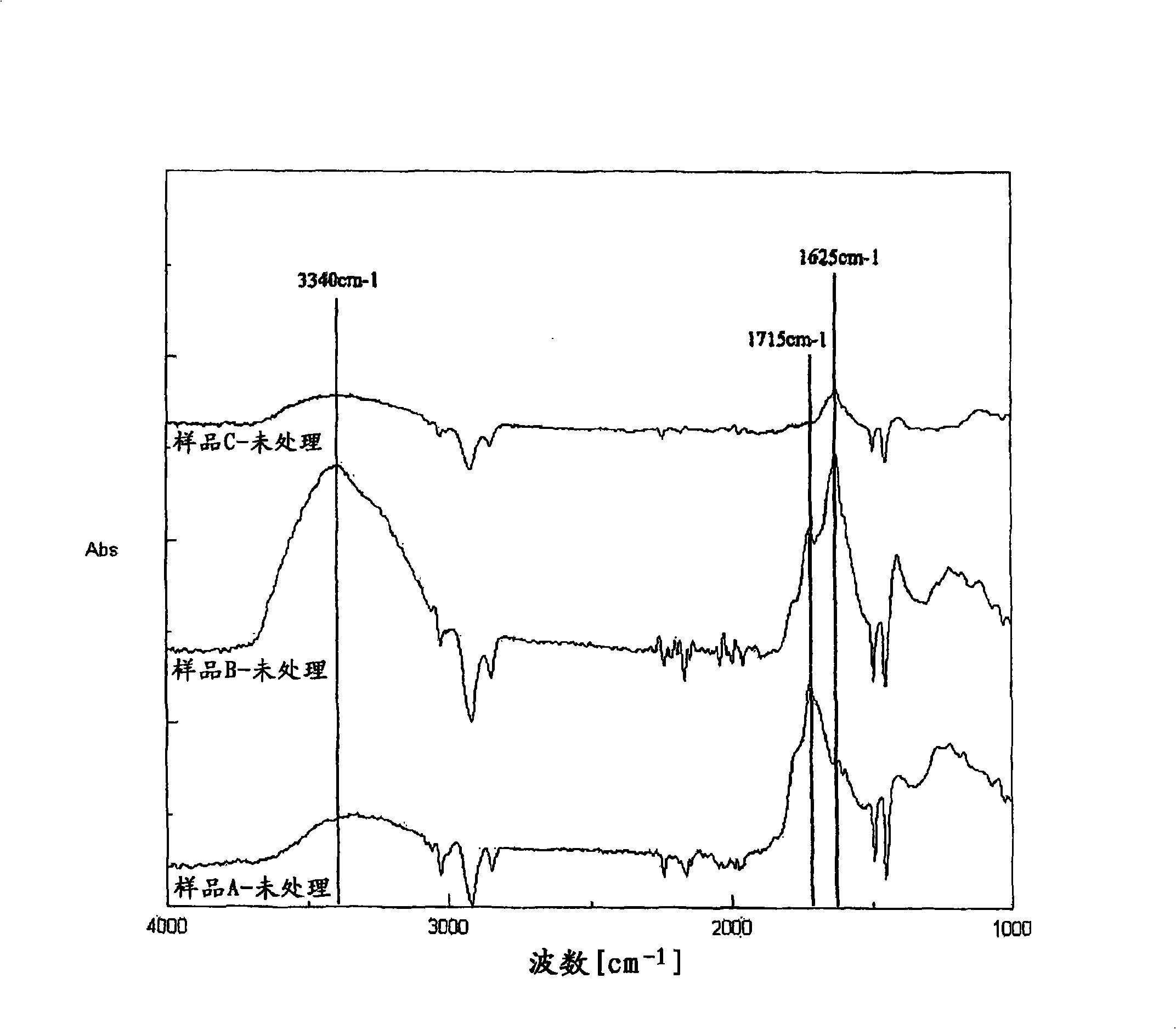Palladium complex and catalyst-imparting treatment solution using the same
A technology of palladium complexes and catalysts, applied in physical/chemical process catalysts, metal/metal oxide/metal hydroxide catalysts, catalyst activation/preparation, etc., can solve the problems of lack of selective adsorption
- Summary
- Abstract
- Description
- Claims
- Application Information
AI Technical Summary
Problems solved by technology
Method used
Image
Examples
Embodiment 1
[0057] Synthesis of palladium complex (I):
[0058] (1) Palladium-double lysine complex ([Pd(Lys) 2 ] 2+ ):
[0059] Palladium chloride (manufactured by Toyo Chemical Industry Co., Ltd., special grade) 0.21 g and L-lysine hydrochloride (manufactured by Wako Pure Chemical Industries, Ltd., special grade) 0.52 g were added to 500 mL of pure water, and potassium hydroxide (Wako Junyaku Co., Ltd., special grade) was adjusted to pH = 6.0, and stirred at 70°C for 1 hour to obtain a catalyst-imparting treatment liquid of 250 mg / L in terms of metal palladium.
[0060] (2) Palladium-double arginine complex ([Pd(Arg) 2 ] 2+ ):
[0061] Palladium chloride (manufactured by Toyo Chemical Industry Co., Ltd., special grade) 0.21 g and L-arginine hydrochloride (manufactured by Wako Pure Chemical Industries, Ltd., special grade) 0.59 g were added to 500 mL of pure water, and potassium hydroxide (Wako Junyaku Co., Ltd., special grade) was adjusted to pH = 6.0, and stirred at 70°C for 1 ho...
Embodiment 2
[0074] The structure of the palladium-amino acid complex:
[0075] Generally known [Pd(Ala) 2 ] has a planar four-coordination structure in which both the amino group and the carboxyl group are coordinated to form a 5-membered ring chelate-coordinated as shown below.
[0076] [chemical 6]
[0077]
[0078] For [Pd(Lys) 2 ] 2+ , [Pd(Ser) 2 ] and [Pd(Glu) 2 ] 2- These three palladium-amino acid complexes are believed to have amino, hydroxyl, and carboxyl groups on the side chains of amino acids as ligands, and the functional groups on these side chains may coordinate with palladium. Therefore, in order to confirm these functional groups Whether it is coordinated with palladium or in a free state, various palladium complexes were determined by ultraviolet-visible absorption spectrum. UV-2500PC (manufactured by Shimadzu Corporation) was used for the ultraviolet-visible absorption spectrum measurement. The measurement conditions were measurement cell length: 1 cm, and temp...
Embodiment 3
[0081] Adsorptivity of palladium complex (I) to carboxyl groups:
[0082] In the palladium complex (I), whether the free amino groups and guanidine groups belonging to cationic groups interact with the carboxyl groups on the resin surface is based on the use of other non-basic palladium-amino acid complexes synthesized in Comparative Example 1. , the amount of adsorption of palladium complexes on the resin surface and the precipitation of electroless plating are judged.
[0083] Polyimide resin (KAPTON 100-EN: manufactured by Toray-DuPont Co., Ltd.) was carboxylated by the following procedure, and a sequential plasma emission spectrometer (manufactured by Shimadzu Corporation) was used. ) Determining the precipitation of electroless nickel when treated with various palladium-amino acid complexes and the amount of palladium adsorption after reduction treatment. The working procedure is as follows, and the measurement results are shown in Table 1.
[0084] [Operation process] ...
PUM
 Login to View More
Login to View More Abstract
Description
Claims
Application Information
 Login to View More
Login to View More - R&D
- Intellectual Property
- Life Sciences
- Materials
- Tech Scout
- Unparalleled Data Quality
- Higher Quality Content
- 60% Fewer Hallucinations
Browse by: Latest US Patents, China's latest patents, Technical Efficacy Thesaurus, Application Domain, Technology Topic, Popular Technical Reports.
© 2025 PatSnap. All rights reserved.Legal|Privacy policy|Modern Slavery Act Transparency Statement|Sitemap|About US| Contact US: help@patsnap.com



